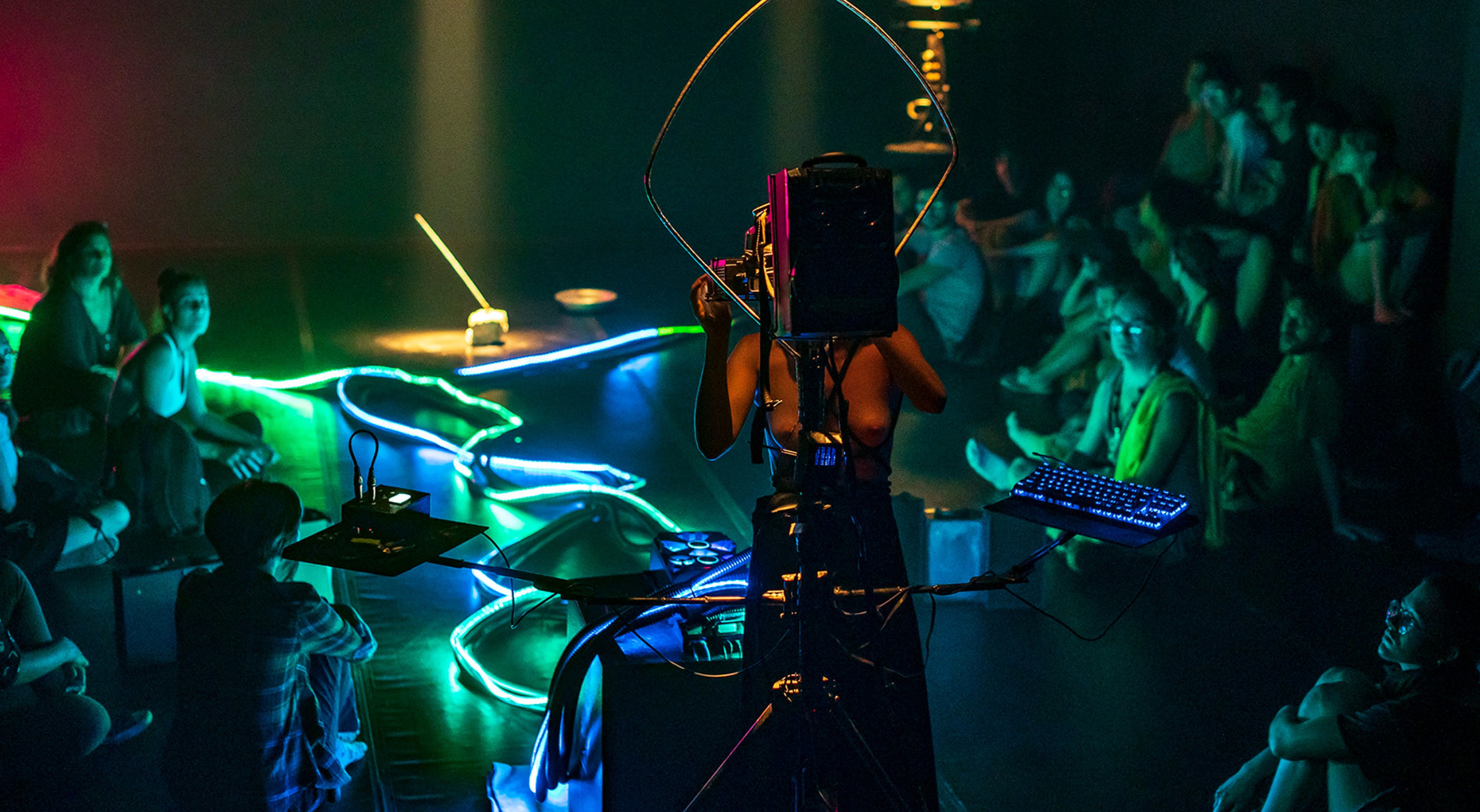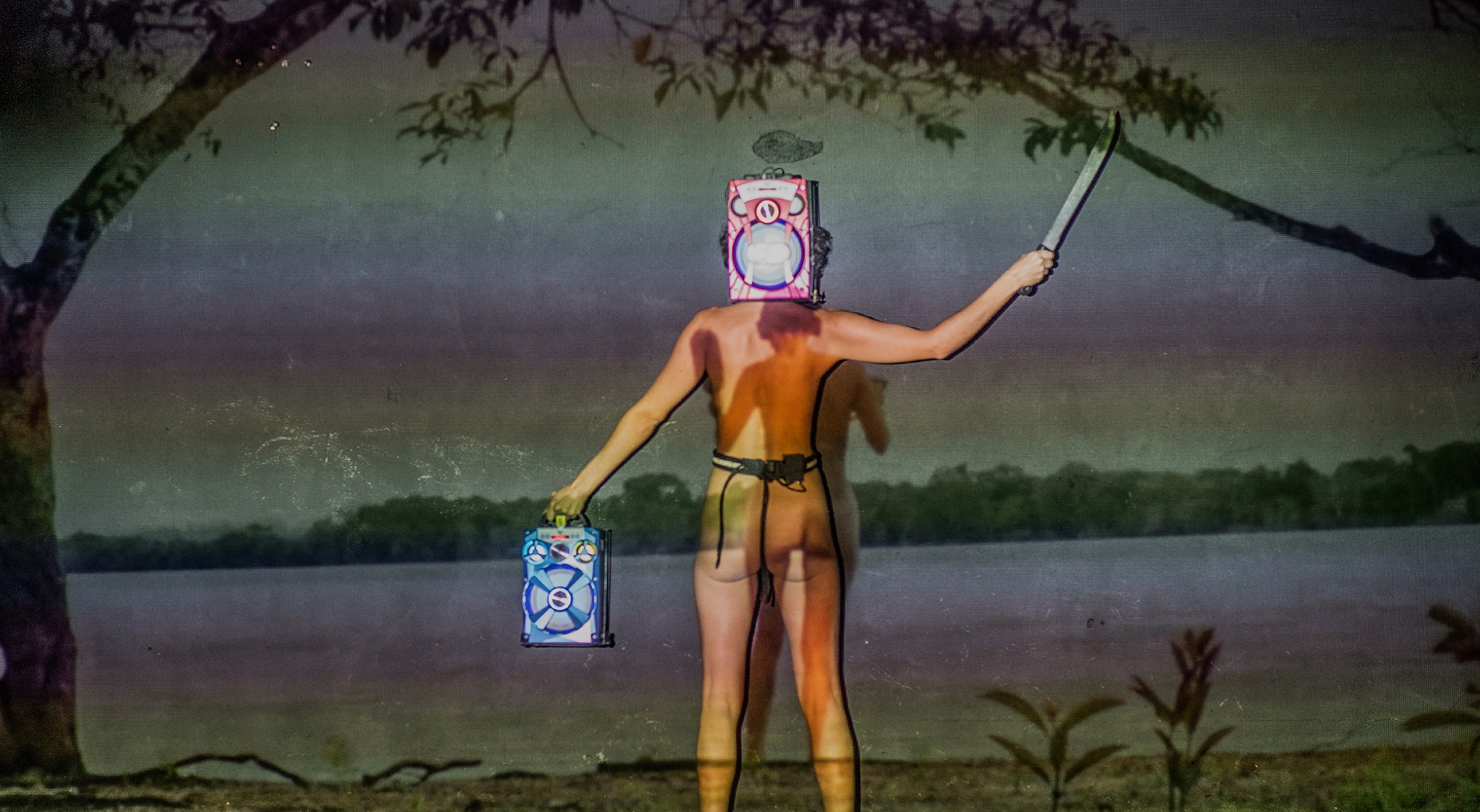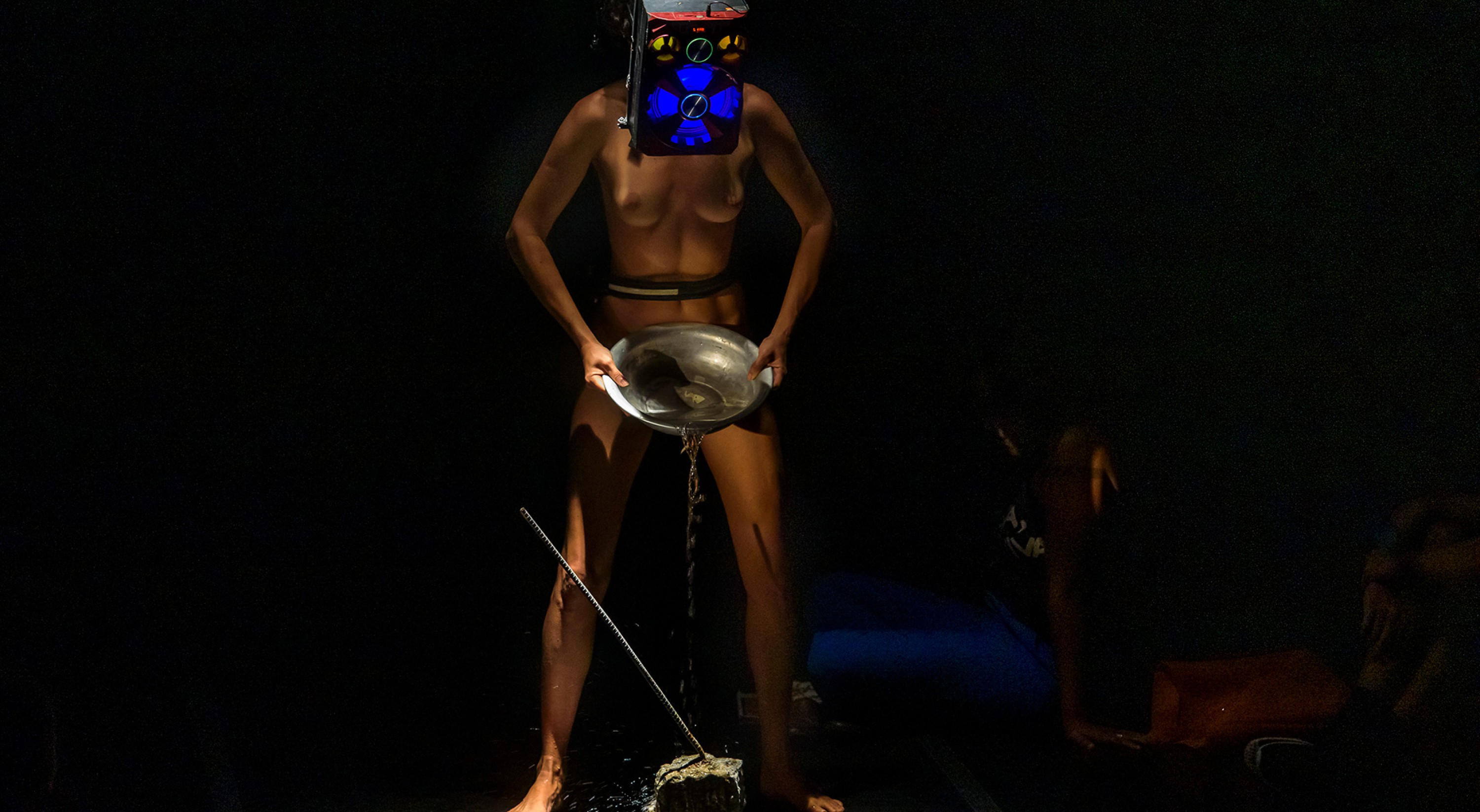Gabriela Carneiro da Cunha
Altamira 2042
septembersept 15 – 19
Conceived and performed by, Gabriela Carneiro da Cunha
Direction, Gabriela Carneiro Da Cunha, and Rio Xingu
With advice from Cibele Forjaz
Assistant directors, João Marcelo Iglesias, Clara Mor, and Jimmy Wong
Directors of research and artistic exchanges, Dinah De Oliveira, and Sonia Sobral
Texts, Raimunda Gomes Da Silva, João Pereira Da Silva, Povos Indígenas Araweté E Juruna, Bel Juruna, Eliane Brum, Antonia Mello, Mc Rodrigo – Poeta Marginal, Mc Fernando, Thais Santi, Thais Mantovanelli, Marcelo Salazar, and Lariza
Video editing, João Marcelo Iglesias, Rafael Frazão, and Gabriela Carneiro Da Cunha
Text editing, Gabriela Carneiro da Cunha, and João Marcelo Iglesias
Sound, Felipe Storino, and Bruno Carneiro
Costumes, Carla Ferraz
Lighting, Cibele Forjaz
In association with Théâtre de la Ville-Paris and Festival d’Automne à Paris.
A production by Corpo Rastreado (São Paulo) ; and Aruac Filmes
A coproduction between Corpo Rastreado (São Paulo) ; and MITsp – Mostra Internacional de Teatro de São Paulo
In association with Théâtre de la Ville-Paris ; and Festival d’Automne à Paris
With support from Fondation d’entreprise Hermès
Partnership with France Culture
Implanted at the epicentre of the planet’s so-called ‘green-lungs’, the giant Belo Monte barrage has, since its construction in 2012, earned its rightful place as the emblem of man’s destruction of nature. This performative installation by Gabriela Carneiro da Cunha, a chamber of resistance to this Anthropocene symbol, evokes the sound of the river Xingu and its secrets in a voluptuous way.
Altamira 2042 is a polyphony of noises, sonorities, timbres, trembling, sighs and desires of the shadow and light voice of rivers themselves, carried along by chants which are usually reduced to silence. Flash drives and LED loud-speakers carried and activated by the performer herself become the vectors of a transmission and amplification of both human and non-human voices emanating from the river Xingu and its banks: riverside populations, indigenous – Juruna and Arawaté – populations, journalists, ecologists, rappers, artists, anthropologists, animals, forest rainfall and the ebbs and flows of the river. A performance-ritual, Altamira 2042, is a techno-shamanic experience which takes place in close proximity to the spectators. Alternating between trance and dance, it disrupts the archaic frontier between nature and culture via a contrast between high-tech mediums and the subject matter itself. It is hardly surprising that a work of such strength as this should have made an impact on Lia Rodrigues, particularly in terms of its political and poetic reach.
See also
For the past four years, the Festival d'Automne opens its program to artists or collectives, making a gesture both artistic and policy. The Carte Blanche becomes a field of experimentation, conducive to crossing of aesthetics, the circulation of ideas and the public. For two weeks, the Festival invites the Casa do Povo, a unique Brazilian art center, to invest the Maison des Métallos in the 11th arrondissement of Paris. On this occasion, the Festival d'Automne experiments with new forms of conviviality, and inaugurates for the first time a HQ, open to upheavals and collective reinvention.


